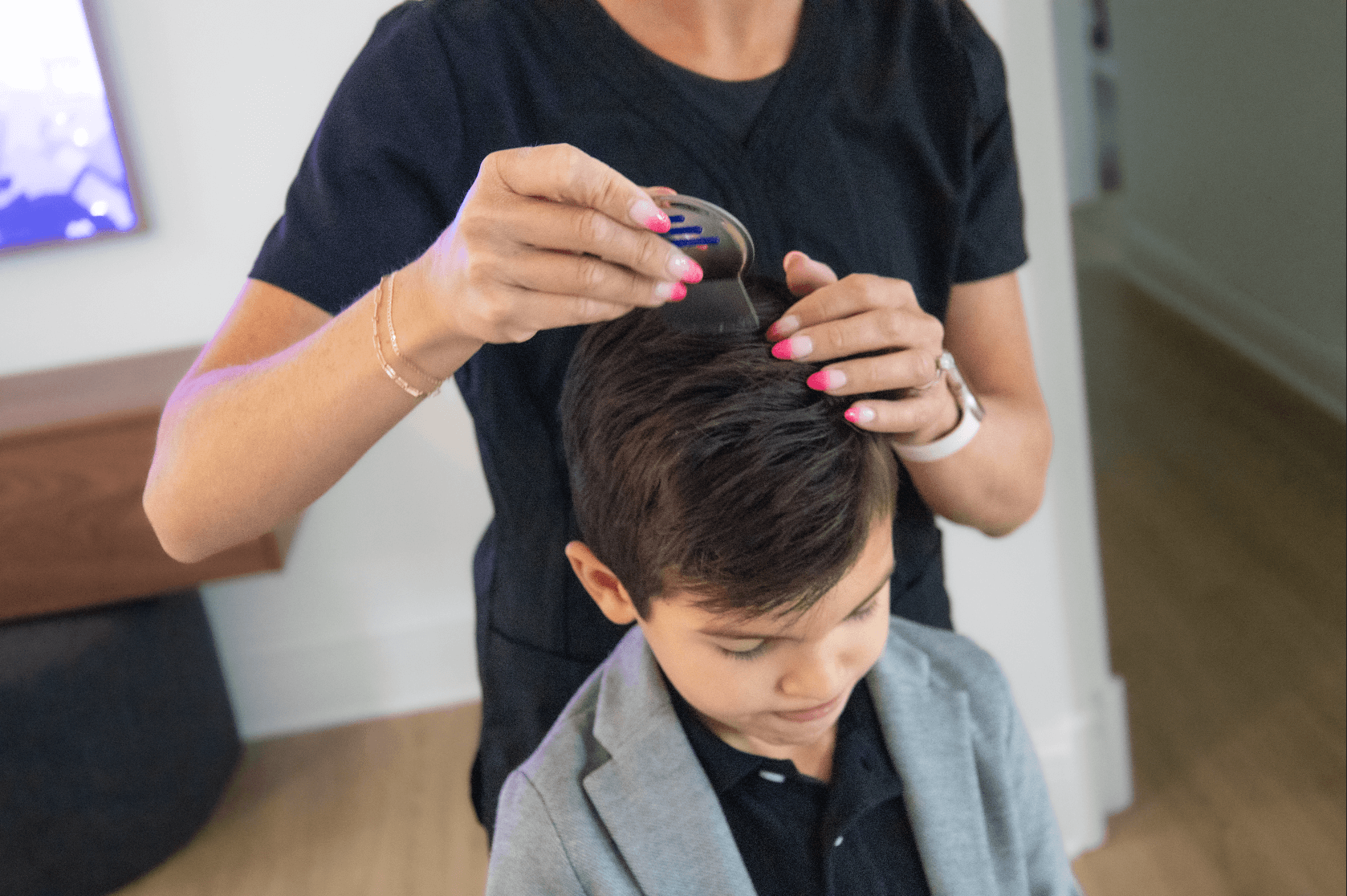

Recognize the Signs of Lice
An itchy scalp can be uncomfortable and distracting, but before jumping to conclusions, it’s important to consider all the possibilities. While lice are often the first concern, other factors like dryness or allergic reactions could also be culprits. Here’s how to identify whether lice might be the cause and what steps to take next.
Common Symptoms of Head Lice
If you suspect lice, look out for these telltale signs:
- Persistent itching: Caused by an allergic reaction to lice saliva.
- Visible nits (eggs): Tiny, oval-shaped eggs attached firmly to the hair shaft near the scalp.
- Moving lice: Small, grayish-white insects that may be spotted crawling on the scalp.
- Tickling sensation: A feeling of movement or something crawling in your hair.
- Red bumps or irritation: Small sores or redness caused by scratching.
Who Gets Lice?
Lice are most commonly found in children but can affect individuals of all ages. Here are key points to understand:
- Direct head-to-head contact: The primary way lice are spread, making children in close-contact settings like schools more vulnerable.
- Shared personal items: While uncommon, sharing combs, hats, or hair accessories can occasionally lead to lice transfer.
- Lice do not discriminate: Clean hair, dirty hair, short hair, or long hair—lice simply seek a human scalp.
Why Professional Lice Removal is Key
Home remedies and over-the-counter treatments can be unreliable. Here’s why professional lice removal is a superior choice:
- Effective comb-out methods: Professionals use specialized combs to remove both lice and nits, reducing the risk of recurrence.
- Avoid unnecessary chemicals: Skip the potential side effects of harsh chemical treatments.
- Minimize transmission: Professional treatments work faster to stop the spread to others.
- Thorough inspections: Experts can identify and treat even early-stage infestations.
Common Misconceptions About Head Lice
Separating fact from fiction can help you feel more confident in managing lice:
- Lice don’t live on bedding: They cannot survive for more than 20 minutes off the human scalp.
- Lice don’t jump or fly: They spread through direct contact, not by hopping from one surface to another.
- Ticks and fleas aren’t lice: Though they may cause scalp irritation, these are different pests with distinct behaviors.
When to Seek Professional Help
If you’ve noticed persistent itching or visible signs of lice, it’s time to act. A professional lice removal service offers:
- Peace of mind knowing the infestation is fully treated.
- A safe, non-chemical approach to lice and nit removal.
- Guidance on preventing re-infestation and maintaining a lice-free environment.
- Don’t let lice disrupt your life. Early intervention and expert care are key to a quick and effective resolution.
Trying to find a reliable lice clinic near you? Head to the Lice Removal Network to find lice treatment options in your area.
Frequently Asked Questions
How do I know if I have lice or itchy scalp?
If you have lice, you may notice persistent itching caused by an allergic reaction to lice saliva, along with visible nits firmly attached to hair near the scalp or small insects moving on the scalp. An itchy scalp without these signs could be due to dryness, dandruff, or irritation from hair products.
Why is my head so itchy but I don’t have lice or dandruff?
Itchy scalp without lice or dandruff could be caused by dry skin, an allergic reaction, or irritation from hair products. Stress, changes in weather, or scalp conditions like seborrheic dermatitis can also contribute to itchiness.
Can you feel lice with your fingers?
Lice can be difficult to feel with your fingers because they are small and move quickly. However, you might feel the sensation of itching or notice small bumps or sores from scratching, which are signs of lice infestation.
